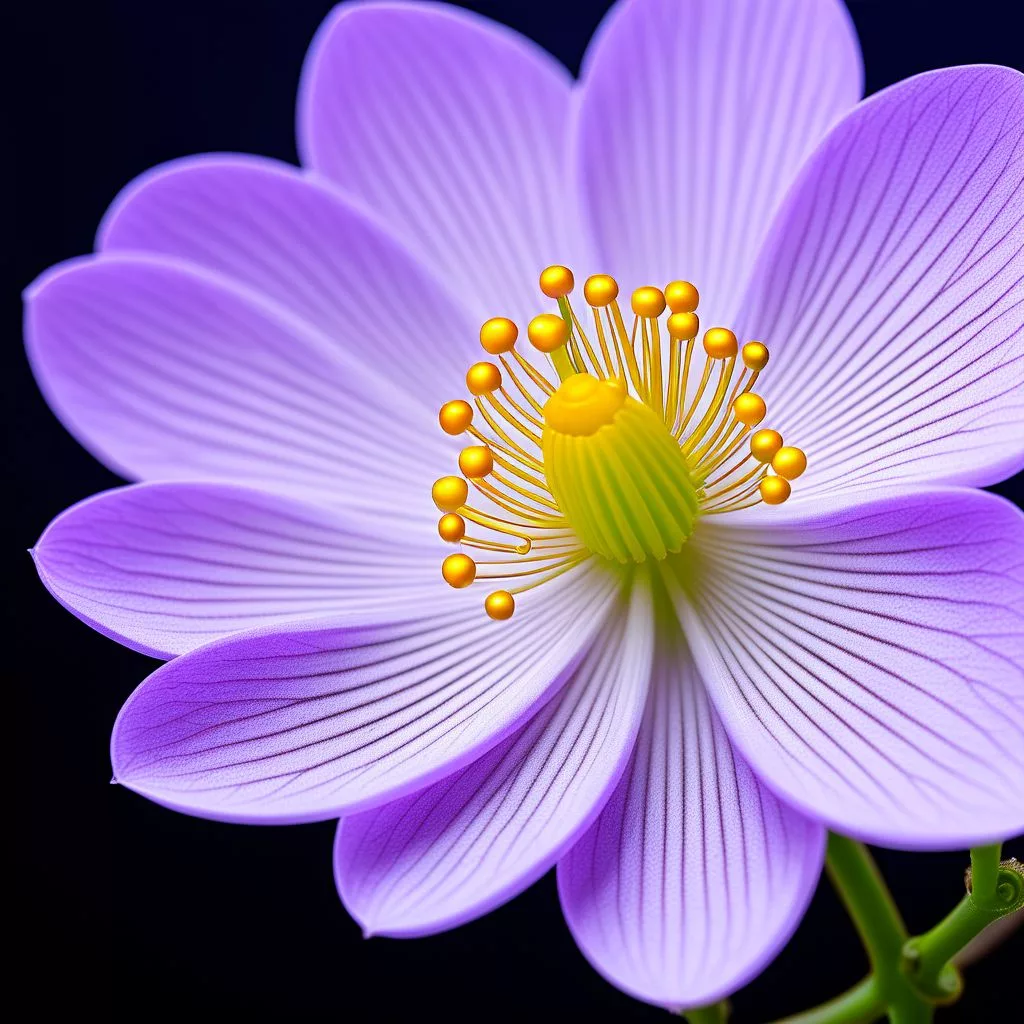Moraea anastasia is a stunning new plant found in South Africa, shining brightly in the face of human disruption. Discovered on the slopes of Botmaskop by botanist Dr. Brian du Preez, this delicate flower is part of the Iris family and represents nature’s strength despite challenges. As a critically endangered species, its discovery highlights the urgent need for conservation efforts in the area, especially with nearby developments threatening its habitat. This remarkable plant not only enriches South Africa’s biodiversity but also inspires a renewed appreciation for the beauty of nature.
What is Moraea anastasia and why is it significant?
Moraea anastasia is a newly discovered indigenous plant species in South Africa, part of the Iris family. Its significance lies in its resilience against ecological disruption, underscoring the need for conservation. This critically endangered plant symbolizes nature’s triumph amidst human activity and highlights biodiversity efforts.
The Unveiling of a Botanical Marvel
The slopes of Botmaskop near Stellenbosch, South Africa, have recently become the focal point of botanical excitement with the discovery of a beautiful new indigenous plant, Moraea anastasia. This stunning species, part of the Iris family, emerged in the aftermath of the felling of a long-standing pine plantation. Situated close to a proposed luxury housing estate, the appearance of Moraea anastasia stands as a symbol of nature’s resilience amidst ecological disruption.
Dr. Brian du Preez, a post-doctoral student at the University of Cape Town and Smuts Fellowship recipient, unearthed this botanical gem. His dedication to monitoring the land post-pine felling, coupled with his expertise, led to the identification of this plant, which has now been spotlighted in the latest issue of the South African Journal of Botany. Alongside Moraea anastasia, three other indigenous Iridaceae species were discovered by fellow botanists John Manning, Nick Helme, and NT Moolman, adding to the richness of the region’s flora.
The Discovery Journey
The discovery of Moraea anastasia is a compelling tale of perseverance and keen observation. Dr. du Preez first noticed this plant in 2023 while walking along a familiar trail. Initially, he dismissed the flower as a mere color variation within its species, not recognizing its unique significance. It wasn’t until a monitoring walk in October that year, when he spotted several plants, that he began to suspect there was more to it. A photograph shown to John Manning, an expert in Iridaceae, confirmed it as an extraordinary find.
Formal scientific description of Moraea anastasia is essential for its protection, as it allows for its listing as a critically endangered species. The team at Stellenbosch University Botanical Garden has already taken steps to collect seeds and plans to propagate this species off-site, ensuring its survival. The fact that this plant thrived despite decades of forestry operations is nothing short of miraculous. Activities such as bulldozing and pine planting generally decimate indigenous flora, yet Moraea anastasia managed to survive.
Conservation Challenges and Hopes
The location of the new Moraea population, outside the formal Botmaskop nature reserve, presents a significant challenge. Dr. du Preez has identified at least four threatened species in the area, including one critically endangered and another endangered species, revealing the ecological richness of this terrain. This discovery underlines the urgent need for protective measures, especially as these findings emerged within less than a year after the pine felling.
Dr. du Preez hopes that the publication of their research will prompt Stellenbosch municipality to undertake formal protection of the property. If ignored, the land risks reverting to a pine plantation or facing other ecological threats. He envisions the municipality ceasing forestry activities on Botmaskop’s slopes and initiating an ecological restoration program to revive the natural vegetation. By integrating this area into the existing protected zones of the Jonkershoek Valley, the municipality could play a vital role in safeguarding its biodiversity.
Broader Implications and Aesthetic Appeal
The story of Moraea anastasia serves as a poignant reminder of the delicate balance between human activity and nature. The plant’s emergence from beneath the shadows of a pine plantation highlights the resilience of indigenous flora and the necessity of vigilant conservation efforts. This discovery not only contributes to the botanical richness of southern Africa but also serves as an inspiration for future ecological restoration projects.
In the broader context of historical and artistic movements, the discovery can be likened to the Renaissance—a period of rebirth and renewal. Just as the Renaissance marked the resurgence of classical knowledge and artistic expression, the emergence of Moraea anastasia signifies a revival of natural beauty and biodiversity, often hidden beneath human activity. In an era increasingly dominated by urbanization and industrialization, such discoveries remind us of the enduring power and allure of the natural world.
The Aesthetic and Academic Significance
The aesthetic allure of Moraea anastasia is undeniable. Its delicate petals and vibrant colors are reminiscent of finely crafted artwork, echoing the floral motifs popular during the Art Nouveau movement. This artistic style, characterized by its organic forms and detailed depictions of nature, aimed to bring the beauty of the natural world into everyday life. Similarly, the discovery of this new plant species brings South Africa’s hidden botanical wonders to the forefront, encouraging a deeper appreciation of the natural world.
From an academic perspective, the discovery of Moraea anastasia offers valuable insights into the resilience of indigenous plant species. It underscores the need for ongoing research and monitoring to uncover and protect these ecological treasures. The collaboration between Dr. du Preez and other botanists highlights the importance of knowledge exchange and interdisciplinary work in advancing our understanding of biodiversity.
Celebrating Nature’s Resilience
In conclusion, the discovery of Moraea anastasia is a testament to the resilience of nature and the dedication of botanists like Dr. Brian du Preez. This new species enriches our understanding of South Africa’s biodiversity and underscores the importance of conservation efforts. As we celebrate this remarkable find, we are reminded of the enduring beauty and complexity of the natural world, and the need to protect it for future generations. This saga not only highlights the triumphs of scientific discovery but also the continual dialogue between human progress and nature’s enduring resilience.
FAQ about Moraea anastasia
What is Moraea anastasia and why is it significant?
Moraea anastasia is a newly discovered indigenous plant species in South Africa, belonging to the Iris family. Its significance lies in its resilience against ecological disruption, underscoring the urgent need for conservation. This critically endangered plant symbolizes nature’s triumph amidst human activity and highlights the importance of biodiversity efforts in the face of development.
Who discovered Moraea anastasia and where was it found?
Moraea anastasia was discovered by Dr. Brian du Preez, a post-doctoral student at the University of Cape Town. The plant was found on the slopes of Botmaskop near Stellenbosch, South Africa, following the felling of a long-standing pine plantation. Its emergence in this area highlights the resilience of indigenous flora amidst human disruption.
What challenges does Moraea anastasia face?
As a critically endangered species, Moraea anastasia faces significant threats primarily due to its location outside the formal Botmaskop nature reserve. The area is at risk from proposed developments, including a luxury housing estate, which could jeopardize its habitat. Dr. du Preez has identified at least four other threatened species in the vicinity, emphasizing the need for protective measures.
What conservation efforts are being undertaken for Moraea anastasia?
Conservation efforts include the formal scientific description of Moraea anastasia to facilitate its listing as a critically endangered species. The Stellenbosch University Botanical Garden team has begun collecting seeds and plans to propagate this species off-site to ensure its survival. Dr. du Preez hopes that publication of their findings will prompt local authorities to take protective action for the area.
How does the discovery of Moraea anastasia relate to broader ecological themes?
The discovery of Moraea anastasia serves as a poignant reminder of the delicate balance between human activity and nature. It highlights the resilience of indigenous flora while underscoring the urgent need for vigilant conservation efforts. This plant symbolizes a revival of natural beauty and biodiversity, evoking parallels with historical movements focused on renewal, such as the Renaissance.
What aesthetic qualities does Moraea anastasia possess?
Moraea anastasia is noted for its delicate petals and vibrant colors, reminiscent of finely crafted artwork. Its beauty echoes floral motifs popular during the Art Nouveau movement, which emphasized organic forms and detailed depictions of nature. This aesthetic appeal not only enriches South Africa’s botanical diversity but also encourages a deeper appreciation for the natural world and its hidden treasures.












